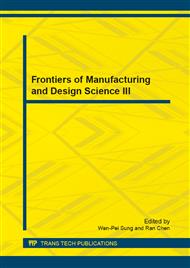p.268
p.272
p.277
p.283
p.288
p.292
p.297
p.301
p.305
The Synthesis and Characteristic of PAA-Ch/SiO2 Hydrogel Nanocomposites by Radiation Methods for Bone Materials
Abstract:
Generally, hydrogel compounds derived from either natural or synthetic chemical suffer from lack of mechanical strength. So high strength poly(acrylic acid) -chitosan-silica (PAA-Ch-Si) hydrogels were prepared by UV light or γ-ray irradiation method for scaffold material application in this paper. The absorption peaks from FTIR show the evidence for the successful grafting of PAA- Ch-Si hydrogel material through radiation co-polymerization. The mechanical property analysis indicate that the maximum compressive strength of this hydrogel was significantly increased to ~42 MPa when PAA incorporated with both chitosan and nano-silica. And from the test results, we can observe that these nanocomposites are fitted to appling for biomedical materials.
Info:
Periodical:
Pages:
288-291
Citation:
Online since:
December 2012
Authors:
Keywords:
Price:
Сopyright:
© 2013 Trans Tech Publications Ltd. All Rights Reserved
Share:
Citation:


